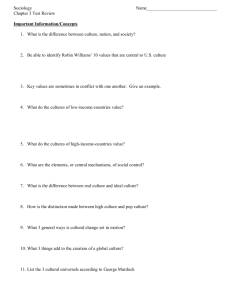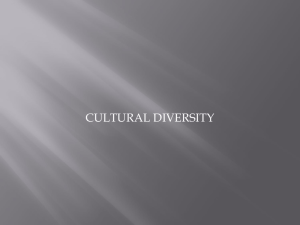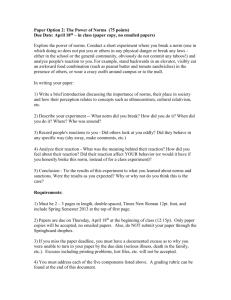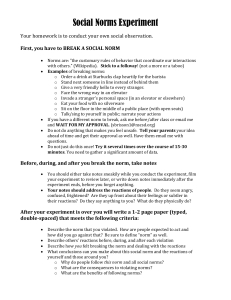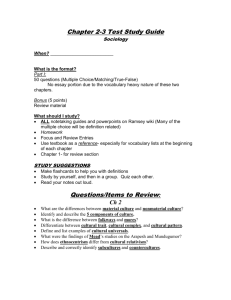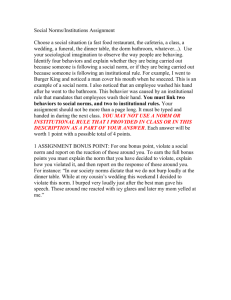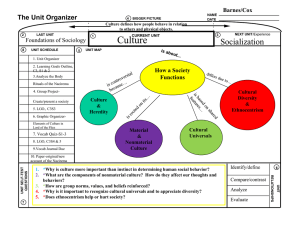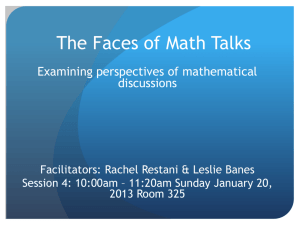Culture: Chapter 3 Objective Guide - Sociology
advertisement
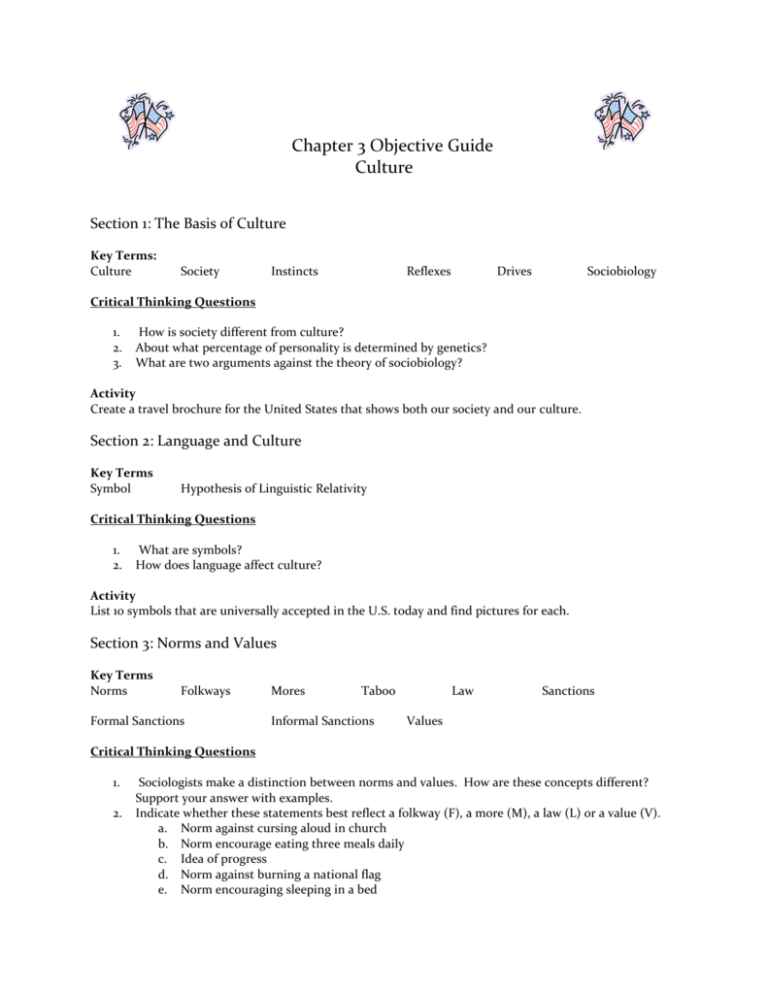
Chapter 3 Objective Guide Culture Section 1: The Basis of Culture Key Terms: Culture Society Instincts Reflexes Drives Sociobiology Critical Thinking Questions 1. 2. 3. How is society different from culture? About what percentage of personality is determined by genetics? What are two arguments against the theory of sociobiology? Activity Create a travel brochure for the United States that shows both our society and our culture. Section 2: Language and Culture Key Terms Symbol Hypothesis of Linguistic Relativity Critical Thinking Questions 1. 2. What are symbols? How does language affect culture? Activity List 10 symbols that are universally accepted in the U.S. today and find pictures for each. Section 3: Norms and Values Key Terms Norms Folkways Formal Sanctions Mores Taboo Informal Sanctions Law Sanctions Values Critical Thinking Questions 1. 2. Sociologists make a distinction between norms and values. How are these concepts different? Support your answer with examples. Indicate whether these statements best reflect a folkway (F), a more (M), a law (L) or a value (V). a. Norm against cursing aloud in church b. Norm encourage eating three meals daily c. Idea of progress d. Norm against burning a national flag e. Norm encouraging sleeping in a bed f. Norm prohibiting murder g. Norm against overtime parking h. Idea of freedom Activity Value Pie: List the 12 most common American values recognized today in our society. Create a “Pie” chart that shows how important you feel each value is. Give a definition for each value listed as well. Section 4: Beliefs and Material Culture Key Terms Nonmaterial culture Beliefs Material culture ideal culture real culture Critical Thinking Questions 1. 2. How is the material culture influenced by the nonmaterial culture? How is real culture different from ideal culture? Activity Create a collage of material vs. nonmaterial cultural images from magazines and other sources. Section 5: Cultural Diversity and Similarity Key Terms Social Categories Cultural universals Subculture Counterculture Ethnocentrism Culture particulars Critical Thinking Questions 1. Identify each of the following as a social category (SC), subcultures (S), or counterculture (C). a. Chinatown in New York City b. Motorcycle gang c. Catholics d. Females e. Revolutionary political group f. The super rich 2. 3. 4. Define ethnocentrism. What are cultural universals? Why do they exist? Are you and your friends members of a subculture? If so, describe some specific elements of that subculture. Activity Complete the worksheet packet.
